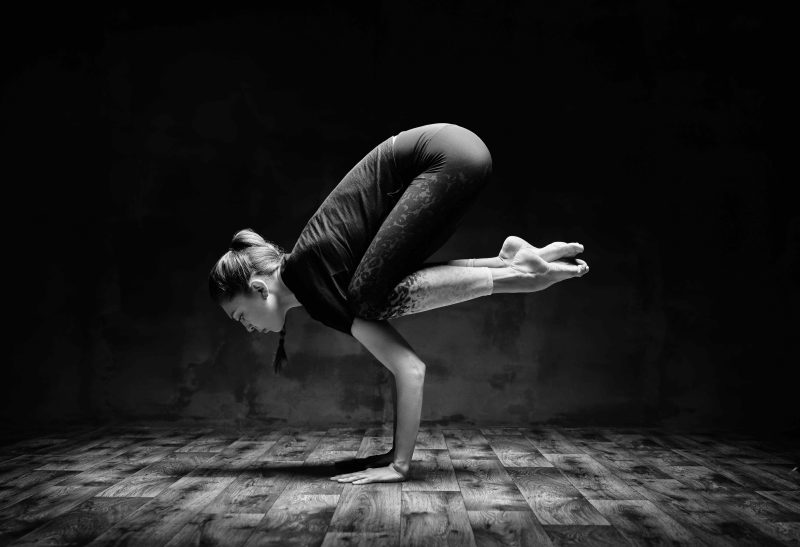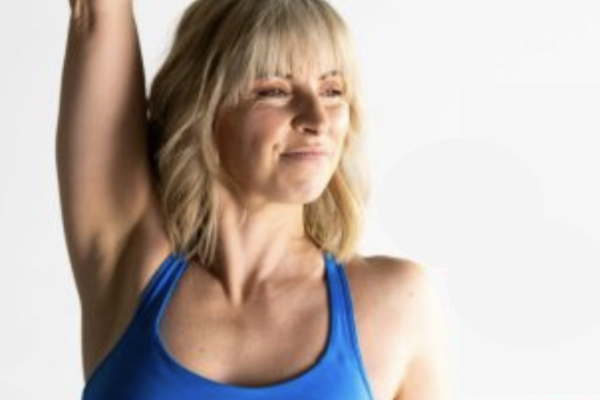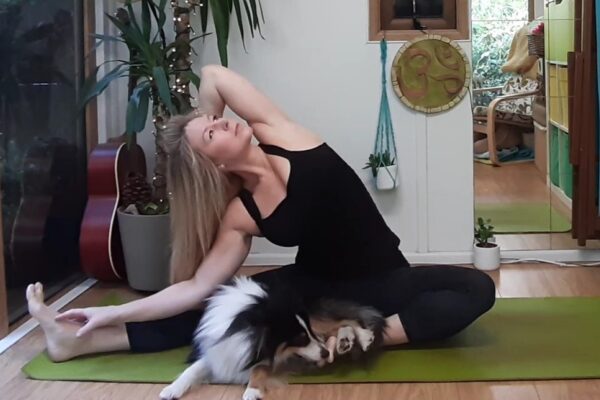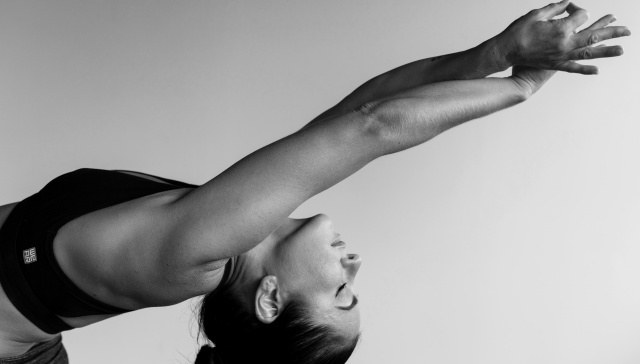Ashtanga Yoga

All you need to know to practise Ashtanga yoga: origins, what to expect in a class, what the primary series are, who it is for, the difference between Ashtanga yoga and Vinyasa yoga, Ashtanga teacher training, opening chant for Ashtanga classes - and our recommended teachers in Ashtanga Yoga.
The Origins of Ashtanga Yoga
Ashtanga yoga is a dynamic and physically demanding form of yoga that focuses on synchronizing breath with a set sequence of postures. It was developed by Sri K. Pattabhi Jois in the early 20th century in Mysore, India. Today, it is practiced all over the world and is known for its challenging yet rewarding nature.
Ashtanga and Iyengar yoga come from the same heritage. The creator of Ashtanga yoga, Sri K. Pattabhi Jois and BKS Iyengar (the teacher who developed Iyengar Yoga) were both taught by Tirumalai Krishnamacharya, who is often credited as the Father of modern yoga.
Sri K. Pattabhi Jois, was born in 1915 in a small village called Kowshika in Karnataka, India. He began his journey into yoga at the age of 12 when he was introduced to the ancient text, Yoga Korunta. This text, which was written by Vamana Rishi, outlined a system of yoga that involved synchronizing breath with specific movements and postures.
Based on this text, Jois developed Ashtanga yoga and opened his first school in Mysore, India in 1948. He continued to teach and spread his style of yoga until his passing in 2009 at the age of 93. His grandson, Sharath Jois, born in 1971, was in charge of the Institute in Mysore until his sudden death in November 2024 in the US at the age of 53.
What to expect from an Ashtanga Yoga Class
Ashtanga yoga is typically taught in a group setting where students follow a set sequence of postures called the Primary Series. The class begins with a chant (Guru Dhyanam), followed by a series of sun salutations to warm up the body.
The sequence progresses through standing, seated, and finishing postures, all linked by vinyasas — fluid movements that connect each posture. Classes often conclude with relaxation or meditation, allowing practitioners to absorb the benefits of their practice.
On average it takes ninety-minutes to complete the Full Primary Series in Ashtanga Yoga. Classes will either be led by a teacher using a counted system where breath and movement are synchronised, or it will be Mysore-style where you will be allowed to self-practice as the teacher observes, correcting or adjusting your alignment.
Traditional Ashtanga Yoga is practised six days a week, and not taught on moon days. A plant-based diet and practising early in the morning is also recommended.
When practising Ashtanga Yoga it’s best to wear something comfortable that you can move in and tie your hair as you'll be jumping in between poses. You should avoid drinking water during class as the focus of the practice is to perfect the series of postures without breaking from the cycle of your breath.
Props like a block, strap or bolster can be used to aid in achieving better alignment, although some teachers may frown on this, especially passed a beginner level.
What is a primary series in Ashtanga yoga?
The primary series, also known as the first series or Yoga Chikitsa, is a set sequence of postures in Ashtanga yoga that focuses on purifying and strengthening the body. It begins with sun salutations (Surya Namaskar A and B) followed by standing poses, seated poses, backbends, and finishing poses. The sequence remains consistent in every class and is designed to be challenging yet accessible for all levels.
Here's a breakdown of the poses typically included in a Surya Namaskar sequence:
- Tadasana (Prayer Pose): Stand at the front of your mat with feet together, palms pressed together in front of the chest.
- Hasta Uttanasana (Raised Arms Pose): Inhale and lift your arms overhead, arching back slightly.
- Uttanasana (Standing Forward Bend): Exhale and fold forward, bringing your hands to the floor beside your feet.
- Ashwa Sanchalanasana (Equestrian Pose): Inhale, step your right leg back, and lower your knee to the floor, looking forward.
- Dandasana (Plank Pose): Exhale, step your left leg back, and hold a plank position.
- Ashtanga Namaskara (Eight-Limbed Pose): Lower your knees, chest, and chin to the floor, keeping your hips raised.
- Bhujangasana (Cobra Pose): Inhale, slide forward, and lift your chest into a gentle backbend.
- Adho Mukha Svanasana (Downward-Facing Dog): Exhale, lift your hips, and form an inverted V-shape with your body.
- Ashwa Sanchalanasana (Equestrian Pose): Inhale, step your right foot forward between your hands, lowering your left knee.
- Uttanasana (Standing Forward Bend): Exhale, step your left foot forward and fold over your legs.
- Hasta Uttanasana (Raised Arms Pose): Inhale, rise up, and stretch your arms overhead.
- Pranamasana (Prayer Pose): Exhale, bring your hands back to the chest.
Difference in between Ashtanga yoga and Vinyasa yoga
While both Ashtanga and Vinyasa yoga are dynamic forms of yoga that focus on linking breath with movement, there are some key differences between the two styles.
1. Traditional vs Creative Sequence
Ashtanga follows a set sequence of postures (known as Primary Series) that remains consistent in every class, whereas Vinyasa allows for more creative sequencing where teachers can mix and match different poses to create a unique flow.
2. Focus on Breath and Bandhas
In Ashtanga, there is a strong emphasis on using specific breathing techniques (Ujjayi pranayama) and engaging bandhas (energy locks in the body) throughout the practice to enhance strength and concentration. While Vinyasa also incorporates breath, it may not be as structured or emphasized as in Ashtanga.
3. Level of Difficulty
Ashtanga is known for its challenging and physically demanding practice, with a focus on building strength and endurance. Vinyasa can also be challenging, but it offers more opportunities to modify poses and take breaks if needed.
4. Traditional vs Contemporary Approach
Ashtanga follows a traditional approach to yoga that has been passed down from teacher to student for generations. Vinyasa, on the other hand, allows for more contemporary elements such as music, creative sequencing, and fusion with other fitness practices.
Who Is Ashtanga Yoga For?
Ashtanga yoga is suitable for anyone seeking a structured and disciplined yoga practice. Its intensity can be appealing for athletes, dancers, or anyone desiring to build stamina and strength. However, beginners are also welcome, as modifications and support from the teacher help new practitioners build their foundation.
This style is especially recommended for those who enjoy consistency and improvement over time. Whether you're looking to deepen your connection to yoga or searching for a vigorous form of exercise, ashtanga yoga provides a rewarding pathway.
Famous people who practice Ashtanga yoga include Madonna, Gwyneth Paltrow, and Sting.
Ashtanga Yoga Teacher Training
There are 2 types of teacher training to become an Ashtanga yoga teacher. You can be "certified" or "authorised". Being authorised takes years of practise and many stays in Mysore.
Your level of authorization will let you teach different series - if you receive a Level 1 authorisation you can teach the primary series, if you have Level 2, you can also teach the intermediate series.
To become an Ashtanga yoga teacher, you should start with practising every day in a renowned Ashtanga Center with authorised teachers. Once your teacher thinks you're ready you can ask them for advice on how to become a teacher.
Here is our full article on Yoga Teacher Training.
Opening chant for Ashtanga classes, also called Guru Dhyanam
Sessions usually start with an opening chant, also called invocation or Guru Dhyanam. It's a chant to honour the Gurus and Patanjali (who wrote the yoga sutras) for their contributions. The second half is also used in the Iyengar Yoga invocation.
Here are the lyrics in Sanskrit:
Oṁ vande gurūṇāṁ caraṇāravinde
sandarśita-svātma sukhāvabodhe
niḥśreyase jāṅgalikāyamāne
saṁsāra-hālāhala-moha-śāntyai
ābāhu puruṣākāraṁ
śaṅkha-cakrāsi-dhāriṇam
sahasra-śirasaṁ śvetaṁ
praṇamāmi patañjalim
Our Ashtanga Yoga teachers

Emma Garland

Ian Clark

 Live Yoga Teachers
Live Yoga Teachers
